- +86 15383000851
- +86 15303238802
- admin@hebeianda.cn


pd_meltingpoint:113 °C(lit.)
Appearance:white to off-white crystalline powder
Purity:99%
|
Chemical Properties |
Potassium iodide is an odorless white solid. Sinks and mixes with water. (USCG, 1999) Potassium iodide is a white crystals, granules, or powder; strong, bitter, saline taste. becomes yellowish when exposed to bright light due to photochemical decomposition liberating traces of free iodine. Soluble in water, alcohol, acetone, and glycerol. slightly soluble in ether and ammonia. It may be prepared bythe reaction of iodine with hot potassiumhydroxide solution followed by separation from the iodate (which isalso formed) by fractional crystallization. In solution it has the interestingproperty of dissolving iodine to formthe triiodide ion I3-, which is brown. Potassium iodide is widely used as ananalytical reagent, in photography,and also as an additive to table salt toprevent goitre and other disordersdue to iodine deficiency. |
|
Occurrence |
Potassium iodide is found in seaweed. Some important applications of this compound involve its use in pharmaceuticals and as a source of iodine in food,especially in animal and poultry feed. Potassium iodide is added to table salt to provide iodine in human food.Another major use is in making photographic emulsions. In analytical chemistry, potassium iodide is used in iodometric titration with starch indicator to analyze dissolved oxygen, dissolved chlorine, sulfide, and other analytes in water. |
|
Uses |
Potassium Iodide is a source of iodine and a nutrient and dietary supplement. it exists as crystals or powder and has a solubility of 1 g in 0.7 ml of water at 25°c. it is included in table salt for the preven- tion of goiter.Potassium Iodide is used primarily used in the treatment of radiation poisoning due to environmental contamination by iodine-131. It is also manufacture of photographic emulsions; in animal and poultry feeds to the extent of 10-30 parts per million; in table salt as a source of iodine and in some drinking water; also In animal chemistry. In medicine,potassium iodide is used to regulate the thyroid gland. Potassium iodide was first used as the primary halide in Talbot’s calotype process, then in the albumen on glass process followed by the wet collodion process. It was also used as a secondary halide in silver bromide gelatin emulsions, animal feeds, catalysts, photographic chemicals, and for sanitation. Potassium iodide is produced by reaction of potassium hydroxide with iodine. Potassium iodide is used to treat the cutaneous lymphatic form of sporotrichosis, although newer agents are also effective in this disorder and may be better tolerated tolerated. The drug is also used for erythema nodosum and nodular vasculitis. |
|
Definition |
ChEBI: Potassium iodide is a metal iodide salt with a K(+) counterion. A compound that contains pentavalent iodine, which is usually ionically bound to electropositive atoms. It is a scavenger of hydroxyl radicals. It has a role as a radical scavenger and an expectorant. It contains an iodide. |
|
Preparation |
Potassium iodide is made by absorption of iodine in potassium hydroxide:I2 + 6KOH → 5KI + KIO3 + 3H2OMost potassium iodate, KIO3 , is separated from the product mixture by crystallization and filtration. Remaining iodates are removed by evaporation of the solution and other processes, such as carbon reduction or thermal decompostion at 600oC to iodide:2KIO3 → 2KI + 3O2Another method of preparation that does not involve the formation of iodate is by treating iron turnings with iodine solution. The product, ferrosoferric iodide, Fe3I8?16H2O, is boiled with 15 wt% potassium carbonate solution: Fe3I8.16H2O + 4K2CO3 → 8 KI + 4CO2 + Fe3O4 + 16H2OA similar method is used to prepare potassium bromide, discussed earlier (see Potassium Bromide.)Potassium iodide can be prepared by reacting hydriodic acid with potassium bicarbonate:HI + KHCO3 → KI + CO2 + H2OIt is purified by melting in dry hydrogen.Potassium iodide also may be obtained by various electrolytic processes. |
|
Brand name |
Iosat (Anbex); Thyro-Block (Medpointe); Thyrosafe (R R Registrations); Thyroshield (Fleming). |
|
Air & Water Reactions |
Water soluble. |
|
Reactivity Profile |
Bromine trifluoride rapidly attacks the following salts: barium chloride, cadmium chloride, calcium chloride, cesium chloride, lithium chloride, silver chloride, rubidium chloride, potassium bromide, potassium chloride, Potassium iodide, rhodium tetrabromide, sodium bromide, sodium chloride, and sodium iodide [Mellor 2, Supp. 1:164, 165. 1956]. |
|
Health Hazard |
May irritate eyes or open cuts. |
|
Flammability and Explosibility |
Nonflammable |
|
Pharmacokinetics |
Potassium Iodide is a metal halide composed of potassium and iodide with thyroid protecting and expectorant properties. Potassium iodide can block absorption of radioactive iodine by the thyroid gland through flooding the thyroid with non-radioactive iodine and preventing intake of radioactive molecules, thereby protecting the thyroid from cancer causing radiation. In addition, this agent acts as an expectorant by increasing secretion of respiratory fluids resulting in decreased mucus viscosity. |
|
Safety Profile |
Poison by intravenous route. Moderately toxic by ingestion and intraperitoneal routes. Human teratogenic effects by ingestion: developmental abnormalities of the endocrine system. Experimental teratogenic and reproductive effects. Mutation data reported. Explosive reaction with charcoal + ozone, trifluoroacetyl hypofluorite, fluorine perchlorate. Violent reaction or ignition on contact with dazonium salts, diisopropyl peroxydicarbonate, bromine pentafluoride, chlorine trifluoride. Incompatible with oxidants, BrF3, FClO, metaltic salts, calomel. When heated to decomposition it emits very toxic fumes of K2O and I-. See also IODIDES. |
|
Purification Methods |
Crystallise it from distilled water (0.5mL/g) by filtering the near-boiling solution and cooling. To minimise oxidation to iodine, the process can be carried out under N2 and the salt is dried under a vacuum over P2O5 at 70-100o. Before drying, the crystals can be washed with EtOH or with acetone followed by pet ether. It has also been recrystallised from water/ethanol. After 2 recrystallisations, ACS/USP grade had Li and Sb at <0.02 and <0.01 ppm respectively. [Lingane & Kolthoff Inorg Synth I 163 1939.] |
InChI:InChI=1/HI.K/h1H;/q;+1/p-1
A novel method was developed to determin...
The synthesis and characterization, usin...
The superionic properties of the compoun...
Lead (II) iodide, PbI2, semiconductor wa...
Ion exchange of layered alkali titanates...
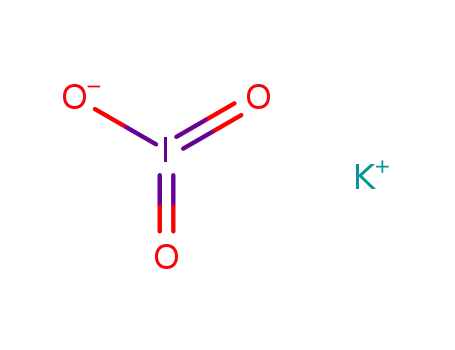
potassium iodate

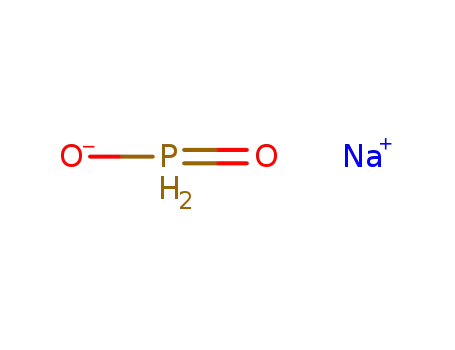
sodium hypophosphite

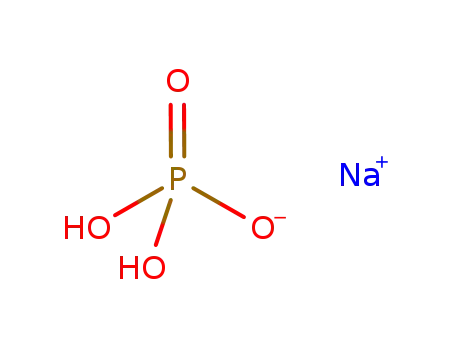
sodium dihydrogenphosphate


potassium iodide
| Conditions | Yield |
|---|---|
|
In water; alkaline solution; 100°C; slow reaction;;
|
Ag2O*I2=Ag2I2O

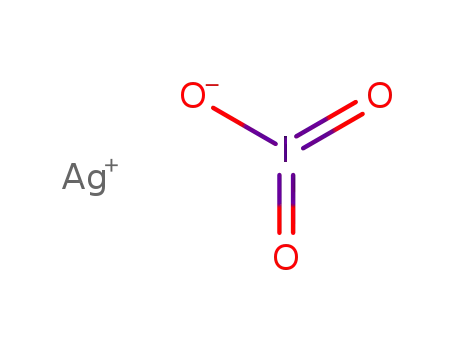
silver(I) iodate


potassium iodide


silver(l) oxide
| Conditions | Yield |
|---|---|
|
With KOH; In not given; in boiling concd. KOH soln.;
|

potassium

ethyl iodide

1-iodo-propane

iodine

potassium
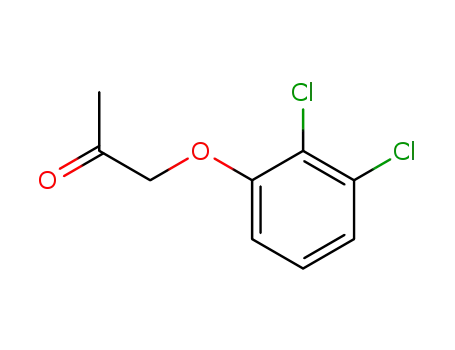
1-(2,3-dichlorophenyoxy)acetone
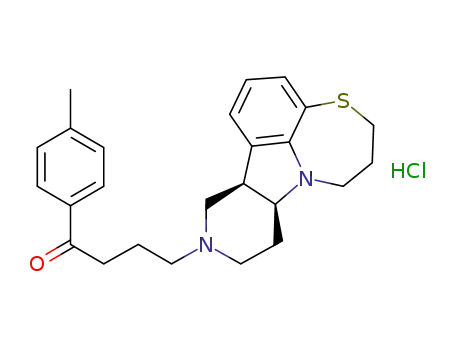
4-((8aS,12aR)-6,7,9,10,12,12a-hexahydro-5H-pyrido[4,3-b][1,4]thiazepino[2,3,4-hi]indol-11(8aH)-yl)-1-(4-methylphenyl)-1-butanone hydrochloride

iodine
CAS:13488-22-7
CAS:11113-50-1